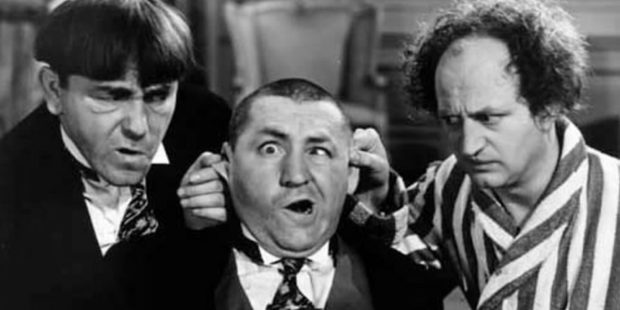Sorry to inform you, but the vast majority of B2B enterprise sales teams out there today, are of the stooge variety. Not the sage variety. And that’s a huge problem.
What do I mean by this? Quite simply that most sales teams are going through robotic, tactical sales motions and hoping for a positive outcome. Worse, they are forecasting deals that never should be forecasted in the first place. Often they are “blindsided” at the end of the quarter and either the deal never materializes on time or it goes away to a competitor or the dreaded “do nothing” alternative.
This is a sales leaders worst nightmare. How did we get to this point? Well, like any industry or field where there is massive growth over time, there is a dilution in talent. If you examine the math behind this, it becomes very intuitive. For example, my supposition is that if there were 50,000 people that sold software to the enterprise 20 years ago and now there are 300,000 people selling software to the enterprise.
And you apply the 80/20 rule (which means 80% of your revenues are generated through 20% of your sales reps), that means 20 years ago there were 40,000 average to poor performers out there selling to the enterprise. Following that math logic through to today’s 300,000 sales reps…that means there are 240,000 average to poor performers out there selling software to the enterprise. Yikes, that’s scary!
The problem is only exacerbated by the fact that the customer has a lower tolerance for average to poor performing sales teams. In fact, they expect a lot more than they did 20 years ago from the sales rep. And they have far more control over the enterprise sales process as evidenced by the fact that they don’t engage a sales rep for 60-70% of their evaluation process today (according to research by SiriusDecisions and CEB).
The other factor influencing this is that both companies and sales reps are not investing in their professional development and sales training like they used to. This is based on my anecdotal experience and observations over the last 25 years of selling technology solutions to the enterprise. There was a day when most B2B technology sales reps could recite chapter and verse the great business books that shed insight on how to influence business more effectively like “In Search of Excellence” (I know that I’m dating myself with this reference), “Crossing the Chasm” or “Inside the Tornado”.
The supply and demand factor reinforces my point…how many of the best business books were written in the year 2000 or prior? How many since then? Here’s a link to Huffington’s Post best business books of all time and if you throw out “The Art of War” by Sun Tzu written in 6th century BC as an outlier (which is a favorite of mine since College:-), it still is heavily weighted towards books written 40-70 years ago (http://blog.hootsuite.com/social-selling-in-b2b-sales-3/).
As a young sales professional, I used to invest in my own development and training. I bought books, videos, subscribed to business magazines (remember business magazines like Business Week, Forbes and Fortune?) and constantly pursued mentors to learn from. Today, most young sales reps are immersed in Facebook, Twitter, and other Social Media to keep themselves entertained.
What is a sales sage? My definition of a sales sage is a sales rep that brings genuine insight and value add to their prospect or client. They challenge the prospect or customer to think of important things that should be thinking about but aren’t. They bring innovative solutions to the table. They focus on multiple dimensions such as can we help you help your customers, not just internal facing perspectives.
A sales sage doesn’t simply parrot back to the prospect or customer what they heard them say as if there were some hidden insight that the prospect or customer wasn’t aware of. The “parrot” sales approach is a prime example of the stooge, zero value add. Think about what is going through a Customer Execs mind at a prospect site when they are hearing what they told you and nothing additional… “Of course I know all of that you moron, remember that I’m the one who told you that in the first place in response to your discovery questions!”
There was a study conducted at a recent Forrester Sales Enablement forum, and they concluded that there will be approx. 1 million less B2B sales reps in the year 2020. They further concluded that there will 500,000 additional “Consultant Type” B2B sales reps in 2020 based on the buyer’s preferences and perceived value of who they want to engage and work with. In this study, Forrester defined four archetypes of sales reps. Here is the paraphrased version of the only B2B sales rep archteytpe projected to grow over the next 5 years:
Consultants – who focus on buyer outcomes and value, are the only archetype expected to grow, adding ½ million to their ranks, as their insights and advice remain relevant and vital to their customers.
I close with following question: How do you pare your sales ranks of the sales stooges and build more sales sages?

